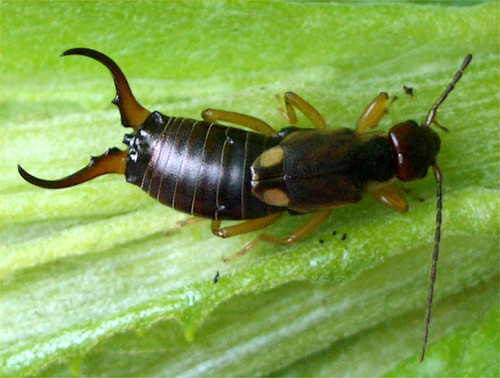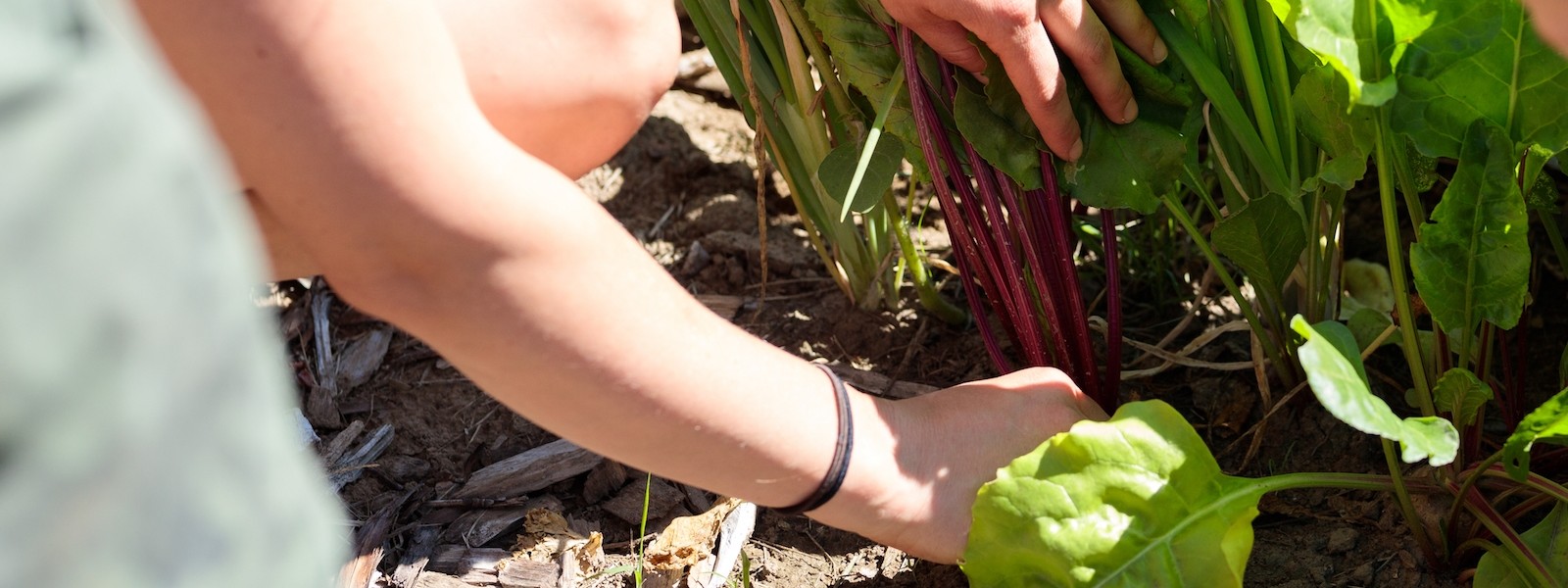Pest: Earwigs
Wet weather bring masses of earwigs and slugs which wreak havoc on your plants close to the ground, especially those that have hollow stem or are very moist like lettuce, cabbage, and many other greens.
Earwigs are dark brown and measure 1/2” to 3/4” in length. Their large rear pincers make them easily recognizable. They hide under garden debris and forage in dark, damp places.

Life Cycle
Female earwigs dig cells in the ground where they lay masses of 30 or more eggs. Eggs hatch into small, white nymphs and remain in the cell protected and fed by their mother until their first molt. Generally there is one generation a year, but females produce two broods. Part of the earwig population hibernates during the winter as pairs buried in cells in the soil.
Plants They Attack
Hosts include: artichokes, bean seedlings, corn, le#uce, potatoes, roses, stone fruits, strawberries, and zinnias.
Spot the Damage
Earwigs will feed upon the foliage and flowers of many common garden plants, but mainly dead and decaying plant ma#er. Leaves have numerous ragged holes or are chewed around their margins. Earwigs also attack maturing fruit by boring holes into the flesh. These pests feed primarily at night and hide in dark, cool places during the warmer daylight hours.
Preventative Actions
- Clear the garden of earwig susceptible debris.
- Trap earwigs in shallow containers of vegetable oil placed throughout the garden. Or placed rolled up dampened newspapers (or paper towel roll) around the garden to attract earwigs and then shake out into soapy water after capture. Easiest trick: Take a newspaper and roll it up securing it with an elastic band - this is a very attractive shelter for earwigs especially. Dunk it in water to get in nice and wet. Lay the wet, rolled up newspaper in the garden between problem plants. Check the trap daily. Bring a bucket of soapy or salty water to the garden. Pick up the newspaper and quickly dunk it in to the bucket to remove the earwigs and slugs that have crawled in to the shelter. Replace the trap to catch some more.
- Apply a band of non-drying glue around the trunk of fruit trees to keep earwigs from climbing trees.
Organic Product Controls: Use botanical oils, citrus oil, diatomaceous earth.
Sources
CCF staff
Good Bug, Bad Bug by Walliser (2008)
The Organic Gardener’s Handbook by Ellis and Bradley (1996)
Interested in learning more? The Grower’s Library at Johnny’s Selected Seeds may have the information you’re looking for.

